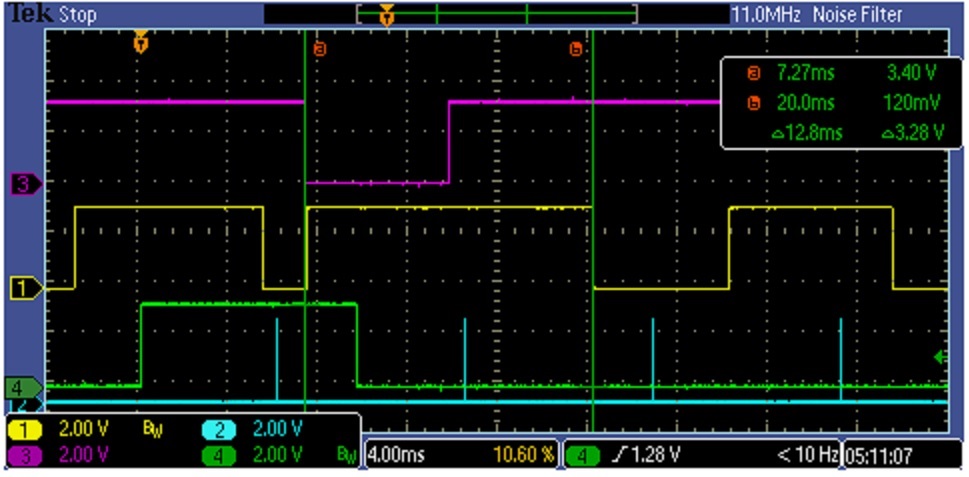Champs,
Customer runs timer in PWM mode and experiences occasional glitches that need to be avoided. there is a note in TRM stating:
Altering TnILR to a value smaller than the current counter value may introduce transients on
the PWM output even when the “Time Out UPDATE” mode is enabled.
customer needs to run the PWM in "PLL" mode meaning period and duty cycle may need to be updated every cycle
my questions are:
1. What is “Time Out UPDATE” mode it mentions? Does it mean TAILD bit is set?
2. What would you recommend to avoid the glitches for the above use case?
thanks
Michael


